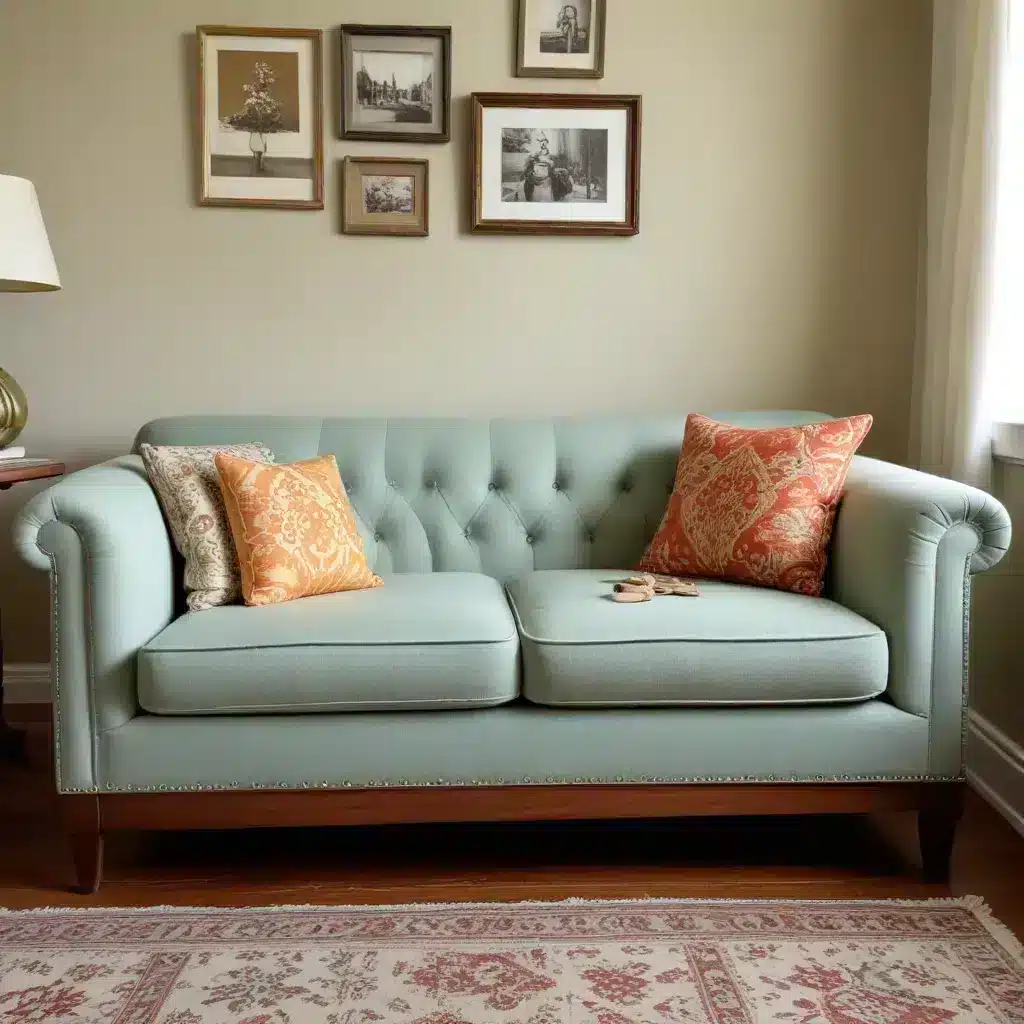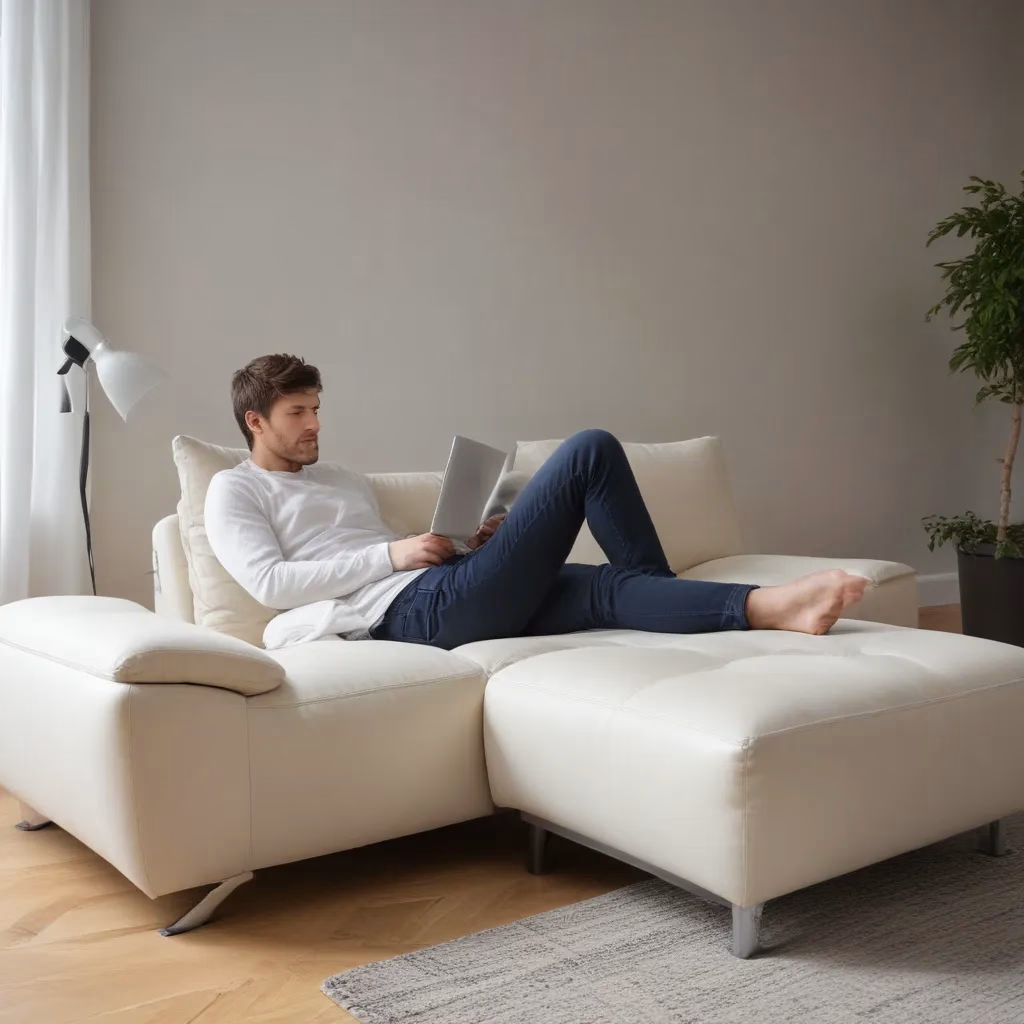
As a furniture specialist with years of experience in the industry, I’ve seen countless sofas transformed from worn-out eyesores to stunning centerpieces. The art of reupholstery is not just about giving old furniture a new look; it’s about breathing new life into cherished pieces and creating sustainable, personalized home decor. In this article, I’ll share my insights on how to successfully revive vintage sofas through reupholstery, along with tips for selecting the right pieces, choosing fabrics, and maintaining your newly refreshed furniture.
Assessing Your Sofa’s Potential
Before diving into a reupholstery project, it’s crucial to determine whether your sofa is a good candidate for renovation. Here are some key factors to consider:
Frame Condition
The foundation of any good sofa is its frame. Over the years, I’ve learned that a solid hardwood frame is worth its weight in gold. When examining a potential reupholstery project, I always start by checking the frame’s stability. Give the sofa a gentle shake – if it wobbles or creaks, that’s a red flag. Sturdy frames made from oak, maple, or walnut are ideal candidates for reupholstery.
I once worked on a 1950s Danish modern sofa with a teak frame. Despite its worn fabric, the frame was impeccable. After reupholstering, it became the showpiece of my client’s living room. This experience taught me that sometimes, what lies beneath the surface is far more valuable than what meets the eye.
Cushion Quality
Next, assess the cushions. Sit on each section of the sofa and pay attention to how it feels. Are the cushions sagging or lumpy? This doesn’t necessarily mean the sofa isn’t worth reupholstering, but it does indicate that you’ll need to replace the cushion filling as part of the process.
In my early days as a furniture specialist, I made the mistake of reupholstering a sofa without addressing the deteriorated cushions. The result? A beautiful exterior with an uncomfortable sit. Now, I always advise clients to budget for new high-density foam and batting if the original cushions are past their prime.
Sentimental Value
Sometimes, the decision to reupholster goes beyond practical considerations. I’ve worked with clients who wanted to preserve family heirlooms or pieces with significant emotional attachment. In these cases, the sentimental value can outweigh other factors.
One memorable project involved a modest mid-century sofa that had been in my client’s family for three generations. While it wasn’t a high-end piece, the stories and memories associated with it made it priceless to them. We carefully restored and reupholstered it, preserving its character while giving it a fresh look that would last for years to come.
Choosing the Right Fabric
Selecting the perfect fabric for your reupholstery project is both an art and a science. Here’s what I’ve learned about making this crucial decision:
Durability Considerations
The longevity of your reupholstered sofa depends largely on the fabric you choose. For high-traffic areas or homes with children and pets, I always recommend performance fabrics. These textiles are engineered to resist stains, fading, and wear.
I once reupholstered a client’s family room sofa in a beautiful silk blend, against my better judgment. Within months, it showed signs of wear and staining. We ended up redoing the project with a high-performance polyester blend, which has stood up to years of use without losing its luster.
Style and Color
While durability is important, aesthetics shouldn’t be overlooked. The fabric you choose should complement your existing decor and reflect your personal style. I always encourage clients to consider the long-term appeal of a fabric rather than following short-lived trends.
In my experience, neutral colors tend to have the most staying power. However, don’t be afraid to make a statement with a bold pattern or vibrant hue if it fits your vision. I once reupholstered a Victorian settee in a striking emerald velvet, which became the focal point of my client’s study.
Texture and Comfort
The feel of a fabric is just as important as its look. Run your hand over potential fabrics and consider how they’ll feel against your skin. Will they be comfortable for lounging?
I remember working on a project where the client insisted on a rough-textured linen for their sofa. While it looked stunning, it wasn’t comfortable for extended sitting. We ended up adding a layer of soft cotton beneath the linen to improve the comfort without compromising the aesthetic.
The Reupholstery Process
Now that we’ve covered the basics of selecting a sofa and fabric, let’s delve into the reupholstery process itself:
Stripping the Old Fabric
The first step in reupholstery is removing the old fabric. This can be a time-consuming process, but it’s crucial for achieving a professional finish. As you remove the old fabric, take note of how it was attached and any unique construction details. This will be your guide when it’s time to apply the new fabric.
I always photograph each step of the disassembly process. These photos serve as a valuable reference and have saved me countless hours of head-scratching when working on complex pieces.
Repairing and Reinforcing the Frame
Once the old fabric is removed, it’s time to assess and repair the frame. This might involve tightening joints, replacing broken springs, or reinforcing weak areas. Don’t skimp on this step – a solid frame is essential for a long-lasting result.
I once worked on a Victorian chaise lounge that had significant structural issues. We ended up replacing several damaged wood pieces and reinforcing the joints. It was a labor-intensive process, but the result was a piece that could withstand another century of use.
Replacing Padding and Cushions
Next, address the padding and cushions. This is your opportunity to improve the comfort of your sofa. High-density foam wrapped in a layer of soft batting is my go-to combination for seat cushions. For the back cushions, a mix of foam and polyester fiber fill can provide the perfect balance of support and softness.
Remember that different areas of the sofa may require different densities of foam. I typically use a firmer foam for the seat cushions and a softer one for the back cushions.
Maintaining Your Reupholstered Sofa
After investing time and money into reupholstering your sofa, you’ll want to keep it looking its best for years to come. Here are some maintenance tips I share with all my clients:
Regular Cleaning
Vacuum your sofa weekly to prevent dust and dirt from settling into the fabric. Use the upholstery attachment and be gentle to avoid damaging the fabric. For leather sofas, dust with a soft, dry cloth.
Spot Cleaning
Address spills immediately to prevent stains from setting. Blot (don’t rub) the spill with a clean, white cloth. For water-based spills on fabric upholstery, a mixture of mild soap and warm water can be effective. Always test any cleaning solution on an inconspicuous area first.
I once saved a client’s white linen sofa from a red wine disaster using nothing but salt and club soda. The key was acting quickly and blotting gently until the stain lifted.
Professional Cleaning
Even with regular maintenance, your sofa will benefit from professional cleaning every 12-18 months. This deep clean can remove embedded dirt and refresh the fabric. For leather sofas, consider professional conditioning to prevent cracking and maintain suppleness.
The Environmental Impact of Reupholstery
In our current era of fast furniture and disposable home goods, reupholstery stands out as an environmentally friendly option. By breathing new life into existing pieces, we reduce waste and conserve resources.
Reducing Landfill Waste
Every year, millions of pieces of furniture end up in landfills. Many of these could have been saved through reupholstery. By choosing to reupholster, you’re making a conscious decision to reduce your environmental impact.
I once worked with a client who was about to discard a perfectly good sofa frame simply because the fabric was outdated. We reupholstered it in a modern print, and not only did they save money compared to buying new, but they also kept a large piece of furniture out of the landfill.
Sustainable Fabric Choices
When reupholstering, consider eco-friendly fabric options. Organic cotton, hemp, and recycled polyester are all excellent choices that minimize environmental impact. I’ve seen a growing trend towards these sustainable fabrics in recent years, and the quality and variety available are impressive.
One of my favorite projects involved reupholstering a set of dining chairs using fabric made from recycled plastic bottles. The result was not only environmentally friendly but also incredibly durable and easy to clean.
Cost Considerations
Reupholstery is an investment, and it’s important to weigh the costs against the benefits. Here’s a breakdown of what you can expect:
Labor Costs
The bulk of your reupholstery budget will likely go towards labor. Skilled upholsterers charge by the hour or by the piece, depending on the complexity of the job. In my experience, a standard three-seater sofa typically takes between 15-20 hours to reupholster.
Fabric Costs
Fabric prices can vary widely, from affordable synthetic blends to high-end designer textiles. On average, you’ll need 12-15 yards of fabric for a standard sofa. Always purchase a little extra to account for pattern matching and potential mistakes.
Additional Materials
Don’t forget to budget for new padding, springs, and other materials that may need replacing. These costs can add up, but they’re essential for a quality result.
While reupholstery can be expensive, it’s often more cost-effective than purchasing a new, high-quality sofa. Plus, you have the added benefit of customization and preserving a piece you love.
When to Consider Professional Help
While some DIY enthusiasts might be tempted to tackle reupholstery themselves, there are times when it’s best to call in a professional:
Complex Designs
Sofas with intricate details, button tufting, or unusual shapes are best left to experienced upholsterers. I’ve seen many DIY attempts go awry when tackling complex pieces.
Valuable Antiques
If you’re dealing with a valuable antique, professional expertise is crucial. An experienced upholsterer will know how to preserve the piece’s integrity while updating its look.
Time Constraints
Reupholstery is time-consuming. If you’re short on time or patience, a professional can get the job done efficiently and with a high-quality finish.
Remember, a well-executed reupholstery job can make your sofa look and feel brand new. If you’re unsure about your skills, it’s worth investing in professional help to ensure the best possible outcome.
Conclusion
Reupholstering a vintage sofa is more than just a home improvement project – it’s a way to preserve history, express your personal style, and make a sustainable choice for your home. With the right approach, you can transform a worn-out piece into a stunning focal point that will serve you well for years to come.
Whether you’re considering reupholstering a family heirloom or a flea market find, remember that the key to success lies in careful assessment, thoughtful fabric selection, and attention to detail throughout the process. And if you’re looking for inspiration or advice on your next furniture project, don’t hesitate to explore the wealth of information available at Sofa Spectacular.
By choosing to revive rather than replace, you’re not just updating your decor – you’re making a statement about the value of quality craftsmanship and sustainable living. So go ahead, give that old sofa a new lease on life. You might be surprised at the transformation that awaits!



